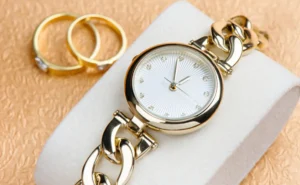
If you’ve ever wanted to learn how to sew, one of the most important things to master is reading and understanding sewing patterns. Patterns provide detailed guidelines on measurements, and materials needed, as well as instructions for constructing your own clothing items or other projects. Knowing how to read a pattern correctly is an essential skill for any sewer or crafter. To help beginners master this valuable technique, we have created a step-by-step guide on how to understand sewing patterns.
Our guide will walk you through each stage of the process—from interpreting standard symbols and visual diagrams found in every patternbook, all the way through piecing fabric together! With our easy-to-follow instructions and tips from experienced sewers along the way, you can quickly learn how to unwrap those daunting patterns and start crafting with confidence!
Understanding Sewing Pattern Terminology
If you’re someone who loves to sew and create your own garments from scratch, then learning the different terminology used in sewing patterns can be incredibly helpful. After all, knowing the difference between a dart and a pleat, or understanding the purpose of a facing or interfacing, can make all the difference when it comes to creating a polished finished product. This is especially true when it comes to sewing patterns for women, as they often require more intricate details and specific shaping. By taking the time to understand the basic terms and common abbreviations used in sewing patterns, you’ll be able to follow instructions more easily and be well on your way to creating beautiful garments that fit like a dream.
Choosing the Right Fabric
When it comes to crafting, choosing the right fabric is crucial. Considering the type, weight, texture, and color of the fabric can make all the difference when it comes to the finished product. For example, if you’re making a lightweight summer dress, you’ll want to choose a lightweight, breathable fabric such as cotton or linen. On the other hand, if you’re making a winter coat, you’ll want something heavier such as wool or a wool blend. Don’t forget to also consider the texture of the fabric – a rough texture may be uncomfortable against the skin whereas a smooth texture may feel luxurious.
And last but not least, the color of the fabric can have a huge impact on the overall aesthetic of the project. With these factors in mind, you’ll be sure to choose the perfect fabric for your next project.
Analyzing the Pattern Pieces
Preparing to sew a garment can be exciting and daunting at the same time. Understanding the pattern pieces is the first step toward creating a perfect fit. Don’t let the number of pieces overwhelm you – each one has its own unique purpose. Familiarizing yourself with what each piece does and how they fit together will help you to create a cohesive and polished final product. Whether you’re a beginner or an experienced seamstress, taking the time to analyze the pattern pieces is a crucial part of the sewing process.

So take a deep breath, grab a cup of tea, and dive into the world of pattern making. You’ll be amazed at what you can create once you understand the building blocks of a pattern.
Cutting Out Your Pieces
When it comes to sewing, one of the most important steps is cutting out your pieces from your fabric. It’s essential that you get this step right in order to ensure your finished garment looks as polished and professional as possible. Using the right tools and techniques can make a world of difference in accuracy and ease of cutting. A high-quality rotary cutter, self-healing cutting mat, and clear ruler can all help you achieve precise cuts every time. It’s also important to pay attention to the fabric grain and pattern layout to make sure your pieces line up just right. With some patience and the right tools, cutting out your pieces can be a breeze and set you up for a successful sewing project.
Assembling Your Finished Project
The moment has finally arrived – all of your hard work has paid off, and you have successfully completed your project. But there’s one final step left, and it’s an important one: assembling all of the pieces to create your finished product. This is the point where all of your planning and organization will come into play. From the various components of your project to the tools and materials you’ve used along the way, everything must come together seamlessly in order to achieve the desired result. It might take a little time and effort, but the satisfaction of seeing your finished product come to life will make it all worth it. So take a deep breath, gather your materials, and let’s get started on bringing your vision to fruition!
Finishing Touches
When it comes to putting together an outfit, the last few details can truly make or break the entire look. Adding some finishing touches like embroidery or buttons are perfect ways to enhance your outfit and add a personal touch to your overall style. Maybe you want to add some intricate floral embroidery to your denim jacket or a few unique wooden buttons to your plain cardigan. These small details can elevate your outfit and make it stand out, leaving you feeling confident and chic. So don’t be afraid to experiment with different finishing touches and see how they can transform your wardrobe.
With the right understanding of sewing terminology, fabric selection, pattern pieces, cutting out, and assembling your finished look, a successful and much-wanted garment should be easy to make. Knowing the steps in this workflow will help you sew with ease and confidence. You can have an enjoyable and stress-free sewing experience by taking some simple steps to understand sewing patterns like reading through this guide.
From here you can confidently choose the right fabric, analyze pattern pieces and cut out your pieces accurately before finally assembling them into a finished project. To give it an extra edge all you need to do is add finishing touches like embroidery or buttons to really bring out the best in your project. Happy sewing!




